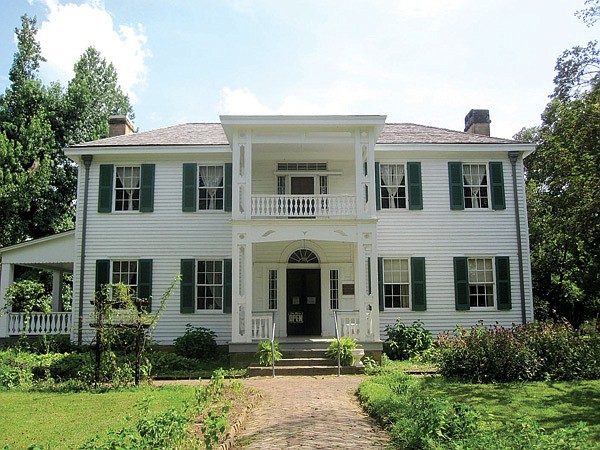War Beyond The States
Symposium looks at homefront experiences
The George M. Murrell Home in Park Hill, Okla., is the only surviving antebellum mansion in the former Indian Territory. The Civil War devastated the Cherokee Nation, says David Fowler, director of the state historic site.
Friday, November 9, 2012
David Fowler does not mince words when he talks about the Civil War in Indian Territory, particularly in the Cherokee Nation that stretched across the northern part of what is now Oklahoma.
“By 1862, this place was vacated,” says Fowler, who is director of the George M.
Murrell Home in Park Hill, Okla. “Everybody had been raided, their crops destroyed, their homes burned. Everybody was forced to take refuge in Kansas or in the Choctaw Nation down by the Red River.
And anybody who tried to stay at home ran a great - and often deadly - risk.”
Fowler will speak Saturday at “Other Voices: Civil War in the Ozarks,” a symposium exploring the homefront experiences of women, African Americans, Native Americans and members of the Peace Society, set for 9:30 a.m. to 3:30 p.m. at the Shiloh Museum of Ozark History in Springdale.
He expects he’ll anger some listeners. He says he usually does.
“People have a very slim understanding of what life in Indian Territory was like to begin with,” he says. “Like Arkansas, Indian Territory was founded and populated by very sophisticated folks.”
Before the war, Fowler says, the daily lives of Cherokee families were much like the daily lives of most people in Northwest Arkansas.
“They farmed, raised cattle, lived in everything from one-room log cabins to twostory, double-pen dogtrots to Greek revival mansions,” he says. “They had institutions of higher learning, mercantile businesses, grist mills; the Martin family up at Cabin Creek was selling 750,000head of cattle a year. Indian Territory was booming.
“That’s why they dubbed that time period as the GoldenAge of the Cherokee Nation.”
When the War Between the States began to affect the five nations living in Indian Territory, Native Americans had to choose up sides, Fowlersays. “Actually, a side was forced upon them.”
The Confederacy sought an alliance based on three selling points: There were Native American slave owners; the Union had stopped paying the annuity payments for the land the Cherokees left behind back East when they were forced into immigration to Indian Territory; and the five Native American nations were promised a voice in the Confederate Congress - “very unusual,” Fowler says, “because these were not states of the Confederacy but independent nations.”
The alliance with the Confederacy was short-lived, however, and many who had tried to remain neutral returned to the Union. “Their hearts were never in it to begin with,” Fowler says.
Many of the wealthy Cherokees, like the ones wholived at the Murrell mansion, escaped to Kansas and then went back East. The house, home of the niece of Cherokee Chief John Ross and her husband, a prominent Virginian named George M. Murrell, is the only surviving antebellum mansion in Oklahoma, Fowler says. In that case, having allegiances to both North and South is probably what saved the house, he adds.
“It was a haven for this family during and after the war.”
Fowler also points out that the Cherokee National Supreme Court Building in Tahlequah still stands as the oldest municipal building in the state of Oklahoma, more proof, he says, that “there’s too much Hollywood in our history. Indians weren’t riding around in buckskin clothing shooting bows and arrows at people.”
Whats Up, Pages 13 on 11/09/2012
